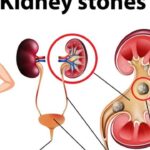Cardiovascular attacks rank as one of the most important causes of global mortality rates and although many are triggered by external elements, personal predispositions like health history, many of these conditions’ causative factors may also be due to occupational exposure. The causative association between a heart attack and work-related factors is important in relation to the workers’ compensation benefits or other forms of legal protections available. This article will guide you on how to determine if a heart attack is work-related, also elucidate risk factors that can make heart attacks occupational in nature, and describe the process of applying for compensation benefits in case of such attacks.
What is a Heart Attack and Why Does it Matter in the Workplace?
A myocardial infarction, also known as a heart attack, occurs when the supply of blood to the heart is cut off, resulting in the heart not receiving oxygen. Such a blockade is more than often caused by a collection of fats, cholesterol, and bartonella other substances resulting to formation of atherosclerosis of coronary arteries.
However, factors of this nature such as an unhealthy diet, consumption of tobacco products and physical inactivity are often over blamed. The environment within which we undertake our activities can also be fundamental to the heart in equal measure.
Recognizing Heart Attack Symptoms at Work
Heart attack symptoms can be dramatic and sudden, but in some cases, they develop more gradually, allowing them to be mistaken for less serious issues, especially in a fast-paced work environment.
Common Symptoms Include:
- Chest pain or discomfort: This is the sign of a heart attack the pressuring, tight threshhold or the feeling of a package of food wrapped around a person.
- Shortness of breath: It is usually accompanied with discomfort in the chest, but in some cases shortness of breath can also occur before the onset of chest pain.
- Cold sweats: There are some exceptions such as when it is too cool or cold but still one sweats excessively which can be interpreted as a possible warning sign.
- Nausea or indigestion: These two more subtle symptoms may be trivialized as emotional stress or too large of a meal.
- Fatigue: A rarely known symptom; mis-attributed fatigue when one feels extreme tiredness without any exertion, not even after sleep.
- Pain in other areas: Pain may extend to the arms, the back, neck or jaw.
If such symptoms are experienced while carrying out a job, they may tend keep in mind that the constancy is due to stress, anxiety or physical workloads, predominantly in jobs with higher stress levels. Its likewise important to identify the warning signs of a heart attack as early as possible and to take action in order to save the heart from incurring more harm.
Understanding the Risk Factors for Work-Related Heart Attacks
There are multiple work-related stressors, both psychosocial and physical, that can give rise to a heart attack. Here are some of the most prevalent dangers:
1. Job Anxiety That Is Not Acute Stress, cognitive and emotional, is one of the most familiar risk factors for the onset of heart diseases, which is the case in numerous job places. High-strain occupations with stringent deadlines, excessive demands, and long working hours have been associated with increased cortisol production.
There is a cumulative effect as stress has been shown over time to precipitate hypertension and deposition of fatty plaques in the vessels which are both risk factors for heart attacks.
2. Physical Exertion Certain occupations entail high levels of activity and thereby, physical strain on the body. Such jobs are often offered in the construction industry, manufacturing industries, or emergency sectors where things like lifting heavy objects, engaging in prolonged activity or working in extreme conditions are normal.
This can pose a danger to the heart especially to people who are predisposed with conditions like hypertension and atherosclerosis.
3. Sedentary Jobs Conversely, jobs that are termed ‘desk jobs’, where there is an expectation of the employee to be in a sitting position for an extended period, also aggravate heart diseases.
Most sitting jobs are devoid of any proper movement which means no proper blood circulation, adequate obesity rates, hypertension and high cholesterol all put the individual at risk of suffering a heart attack.
4. Elements of the environment There are some work settings that include additional risk factors for their employees.
For example, occupations that require working under extreme heat, in areas with high levels of pollution, or in the presence of harmful chemicals may worsen existing heart conditions. In particular, noise has been associated with increased stress and blood pressures.
5. Work Done At Time Other Than Day And Lack Of Sleep Sufferers of rotating, night shifts and other shift patterns frequently find their sleep patterns disrupted.
Lack of sleep is a primary risk factor for cardiovascular illness as it increases blood pressure and inflammation. These factors can have a very detrimental effect on the heart in the long run.
Also read: What Is The Difference Between Angina, Heart Attack, And Stroke?
Is a Heart Attack Considered Work-Related?
Establishing a causal relationship between work and the heart attack is influenced by certain medical and legal provisions. A heart attack is deemed as work-related if it occurs during or immediately after a work activity and, more importantly, the causes of its occurrence are considered to be the working conditions.
It is not apparent that this can be done without any problems because heart-associated illnesses have numerous determinants such as inherited predisposition, lifestyle, past, and present illnesses, and so forth. Nevertheless, there are several important aspects when assessing the cause of heart attack for occupational purposes:
Medical Diagnosis and Evidence It is quite common for the doctor to assess all your medical conditions including any comorbidity or family history before deciding on the connection between a heart attack and one’s job. If you were otherwise well but due to job stress or strain just prior to the attack, that gives rise to an issue of work causation.
Documenting Work Conditions If the concern extends to a heart attack being or resulting from an occupational hazard, documenting work conditions mandatorily becomes important. Were you under stress at the time? Did you take part in strenuous activities? Were there any other contributing factors to your condition that you would say was an environmental condition?
Such evidence as harassment documents support from colleagues or proof of a stressful workplace will serve to strengthen your case.
Examples of Work-Related Heart Attacks
Take the situation of John, for instance, who worked as a construction worker and used to do at least 10 hours for every shift in an extremely high temperature. John had not suffered any heart conditions in the past, but while lifting heavy objects, he had a heart attack due to extreme heat (100-degree temperature).
As a result, the family won the case, arguing that heat exposure combined with heavy work and long hours contributed to his heart attack, which made it work-related.
In another instance, Sarah was a top management executive who was always under pressure to reach targets and work for long hours. Despite a risk factor for her, heart diseases running in the family, she suffered a heart attack shortly after a 14-hour shift towards the end of a project.
The company she worked for played a major role in the cause of her heart attack being considered work-related due to the levels of stress involved.
Filing a Workers’ Compensation Claim for a Heart Attack
In case of a heart attack caused by employment, workers’ compensation may be claimed. Nevertheless, making a claim may be a daunting task as there are many factors to disprove the claim and the employee has to prove the cause of the heart attack in relation to the factors at work.
Conditions of Occupational Disease Compensation In order to be entitled to an occupational illness benefit, it must be established that the heart attack is connected to one’s duties or working environment.
This would entail, for example, providing ~an account of~ instances of stress, heavy lifting or adverse working conditions that could have caused the incident.
Commencing the Procedure It is essential that you notify your employer about the heart attack that you have suffered, almost instantly and start documenting the evidence. This entails medical records, statements from other people including coworkers, and records regarding work environment.
Keep immune that, employers and their insurance companies will contest the claim especially in cases where there are already existing ailments.
Digital Difficulties It is not easy to demonstrate that a heart attack was caused or triggered by work conditions and responsibilities.
Most insurance companies will want to put the blame on other factors instead, for example, factors like hypertension and high cholesterol which are considered pre-existing variables will be blamed and not the working conditions. It is for this reason that proper documentation and medical history becomes very important.
Legal Assistance If your workers’ compensation claim is denied or you have had issues establishing that the heart attack occurred within the scope of employment, a workers’ compensation attorney who practices in such area may be helpful.
Preventing Heart Attacks in the Workplace
While you cannot always control your work environment, there are steps both employers and employees can take to reduce the risk of heart attacks.
- Encourage Heart-Healthy Practice It is essential to promote heart attack awareness and heart-friendly practice among the employees, which includes short spouts and movement practices during the working times, and relaxing steps that can help them cope with work related stress. There are quite basic solutions yet effective such as conducting walking meetings or using standing desks.
- Workplace Wellness Programs Such arrangements can also be made for the companies in which the employees are offered health assessment checkup followed by management of stress workshops and aerobic contests. It is important to note that these programs are not only intended for the physical health of employees, but also for the building of a better work culture.
- Open Communication Encouraging signs and reporting of heart complications and work related stress should be a commonplace activity without any repercussions to the employees. This is why the management must create a healthy environment where such concerns are addressed and preventive measures put in place.
Conclusion
In recognizing whether a heart attack is work-related or not, medical and work-related aspects should be well evaluated. While some heart attacks can be triggered by factors like stress, physical activities, or other risk factors that occur in the place of work, others may simply be as a result of illness that the affected person has suffered from for some time.
Understanding the symptoms of a heart attack and knowing its risk factors come in handy in ensuring that measures are undertaken to protect one’s heart.
Where a person thinks that the heart attack was caused by the work they were doing, it is imperative that they move fast to collect all evidence in support of a workers’ compensation claim. The health of your heart is important – whether you are in the office or at home.



